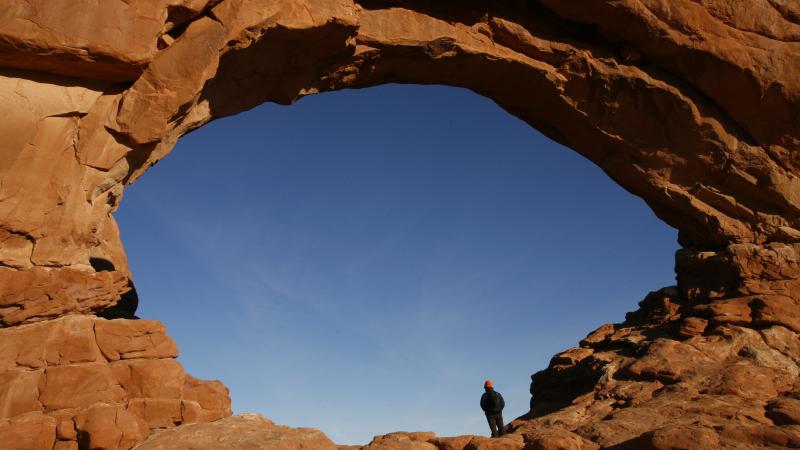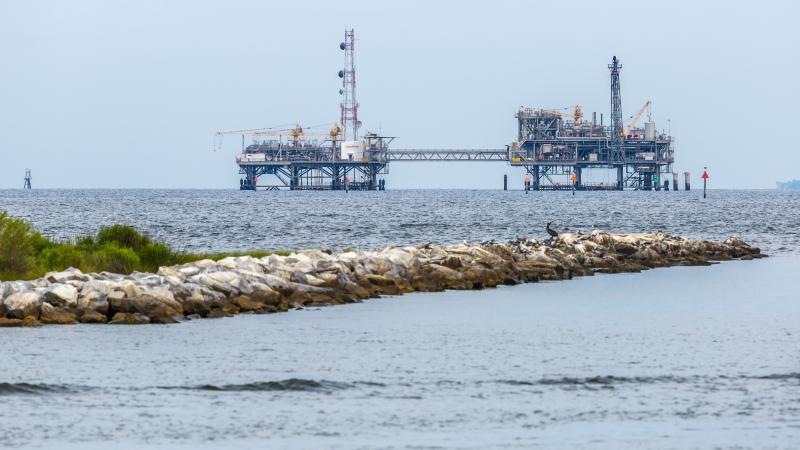Experts say oil platforms can become marine habitats, but permit reform needed, documentary says
“Steel Sanctuary: The Rigs to Reef Story,” a new documentary on the Rigs to Reefs program, explains how the program works, what its benefits are, and how permit challenges remain one of the biggest impediments to turning decommissioned offshore oil platforms into marine wildlife sanctuaries.
A new documentary is shedding light on a program that allows decommissioned offshore oil platforms to become permanent sanctuaries for marine wildlife. When an oil platform is installed, marine ecosystems begin to grow around the structures underneath the water. Over time, production from an offshore oil well declines and the platform must be decommissioned.
The Rigs to Reefs program allows the structures to be converted into reefs so that the ecosystems that have grown up around them during the well’s lifetime won’t be destroyed. Besides providing habitats for marine wildlife, supporters say the program benefits coastal economies that rely on fishing and tourism.
“Steel Sanctuary: The Rigs to Reef Story,” a new documentary on the program, explains how the program works, what its benefits are, and how permitting challenges remain one of the biggest impediments to turning decommissioned platforms into marine wildlife sanctuaries.
Abundance of habitat, restoration of coral reefs
Gabriella Hoffman, director of the Center for Energy and Conservation at Independent Women’s Forum, went to the film’s premiere in Washington, D.C. last month. She told Just the News she was intrigued by the Rigs to Reef program and the documentary allowed her to see the sanctuaries up close.
“In the Gulf of America, it has seen great success. You've seen the restoration of coral reef ecosystems that were not there before. It’s been like a force multiplier, where the decommissioned oil rigs have just created this abundance of habitat,” Hoffman said.
The film, which was produced and sponsored by Arena Energy, an oil and gas exploration company, contains interviews with members of the Louisiana Congressional delegation, Louisiana Governor Jeff Landry, environmental consultants, conservationists and fishermen.
These interviews explain that the Gulf of America seabed is very sandy and lacks any natural habitat for marine wildlife.
Emily Hazelwood, a marine conservation biologist and offshore energy consultant with the Blue Latitudes Foundation, explains in the film that she was a field technician working on the 2010 Deepwater Horizon Oil Spill. In the course of this work, she talked with oil workers who would tell her they couldn’t wait to go fishing on the weekend on the oil platform, because it provided such a great fishing experience.
“I became intrigued by that dichotomy of oil platform, beautiful reef,” Hazelwood said.
Amber Sparks, also a marine biologist with the Blue Latitudes Foundation, said that the habitats around oil platforms have been studied for over 30 years, and they’re some of the most productive ecosystems on the planet.
Biodiversity achievement challenged
Despite the environmental and marine life benefits of the program, some environmentalists oppose it.
"Offshore oil and gas drilling is inherently dangerous," Kristen Monsell, Oceans Program Litigation Director for the non-profit Center for Biological Diversity, told PBS SoCal. Monsell said the infrastructure is past its expected lifetime, particularly with drilling off the California Coast, and that there are ongoing risks of an oil spill.
Rep. Marc Veasey, D-La., said in the documentary that removing these platforms entirely destroys and understates the under-reported biodiversity achievement. “I know that there are a lot of people out there that are sincerely concerned about the environment that think when oil and gas platforms are removed, that it's going to be an environmental victory, but it's going to be completely opposite of that,” Veasey said.
Before a platform can be converted into an artificial reef, there’s a series of permits that the operator has to obtain, involving the Army Corp of Engineers and the Bureau of Safety and Environmental Enforcement — what the documentary calls a “slog of red tape.”
Once approved, the portion of the platform above the surface of the water is cut free from the structure and hauled away. Sometimes the structure beneath the water is demolished with explosives and cut apart to be towed, where it’s deployed at another location as a reef. Others are toppled onto their side, and yet others are severed at a depth of around 85 feet. The top portion is then placed on the sea floor next to the remaining base of the structure.
This process saves money for the operators responsible for the decommissioning. The operators donate half the savings from the cost of full removal to the state, who have responsibility for the reef. In Louisiana alone, according to the documentary, these funds have resulted in millions of dollars going toward reef conservation since 1986.
Permitting reform is the key to more new reefs
Over 600 platforms have been transformed into artificial reefs, according to the documentary. Of the 7,000 platforms that have been built in the Gulf of America, only 1,300 structures remain. The documentary's narrator said that regulators push for swift removal, and the pace is accelerating.
The documentary argues that more of these remaining structures could become reefs if permitting speeds were increased. The program could also benefit, according to the documentary, from federal legislation that prioritizes reefing in place, which leaves platforms in their original locations. This minimizes disruption to the ecosystems that have grown around them. Operator participation in the program could also be incentivized with funding for state conservation programs.
In its current form, according to the documentary, the red tape is too slow and only about 28% of eligible platforms become reefs. The rest are lost to full removal.













